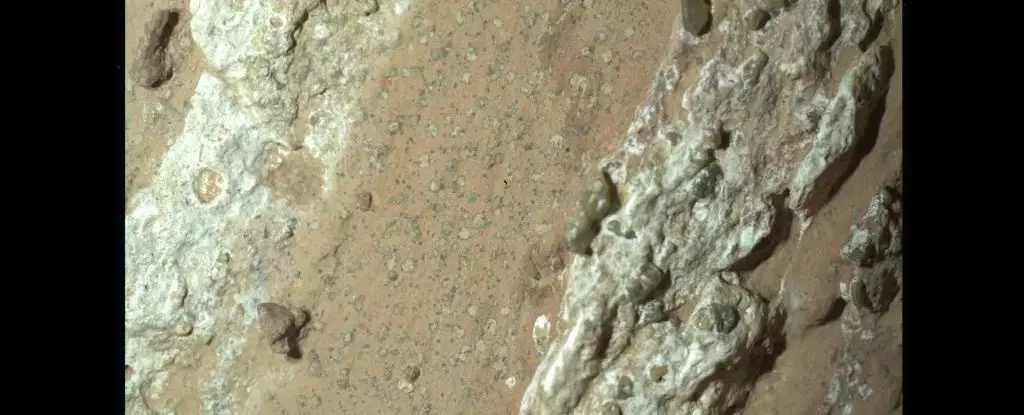Recently, the Perseverance rover on Mars made a significant discovery on the edge of an ancient river valley. Named Chevaya Falls, this rock contains veiny sedimentary material with signs that it may have once supported life-supporting chemistry. The presence of organic compounds and leopard-like spots suggests that chemical reactions similar to those used by chemosynthetic microbes for energy may have occurred billions of years ago.
This discovery adds to the growing body of evidence that suggests Mars could have been hospitable to life in the past. The presence of water, chemistry, and conditions for the formation of life’s building blocks indicate that conditions on Mars were favorable for life as we know it. Scientists believe that any potential signs of life on Mars would likely be microbial and adapted to low- to no-oxygen conditions.
The finding at Chevaya Falls represents a significant step in the search for life on Mars. The rock’s sedimentary layers and organic, carbon-rich material provide strong evidence of past watery conditions that could have supported life. The presence of organic material, when combined with other possibly biological signs, becomes even more significant in the search for past life on Mars.
The rock’s composition, including layers of calcium sulfate, hematite, and olivine, suggests possible chemical reactions that could have provided energy sources for microbial life. The black-bordered spots on the rock, resembling a leopard’s spots, contain iron and phosphate, indicating past chemical reactions that could have been utilized by microbes for energy.
Challenges in Interpretation
While the discovery at Chevaya Falls is promising, there are challenges in interpreting the findings. It is essential to consider alternative formation mechanisms that do not involve microbial life. Repeated exposure to water and volcanic conditions could also explain the veins, spots, and mineral inclusions found in the rock.
Perseverance’s analysis of Chevaya Falls has revealed valuable information, but there is still much to learn. The rover has collected a sample from the rock, which is waiting in a tube for potential future retrieval by a spacecraft. This sample represents a compelling incentive for further exploration and the potential return of Martian rock samples to Earth for more in-depth analysis.
The discovery of Chevaya Falls on Mars offers intriguing insights into the planet’s past potential for supporting microbial life. The complex composition of the rock and the presence of organic material provide strong evidence of past watery conditions and chemical reactions that could have been utilized by microbes. While there are still challenges in interpreting the findings, this discovery represents a significant milestone in the search for life beyond Earth and may fuel efforts to send human missions to Mars in the future.


Leave a Reply